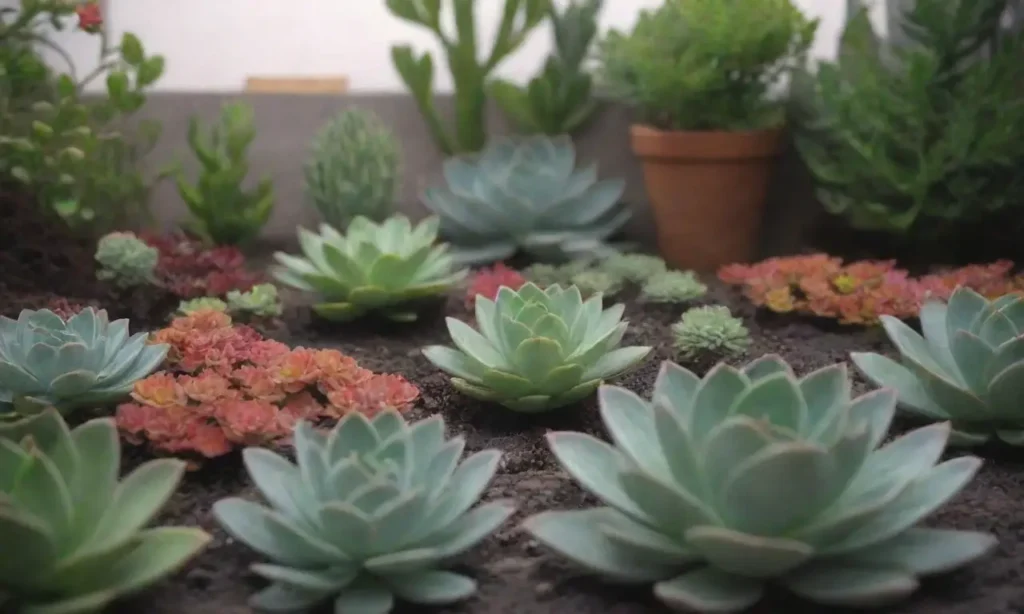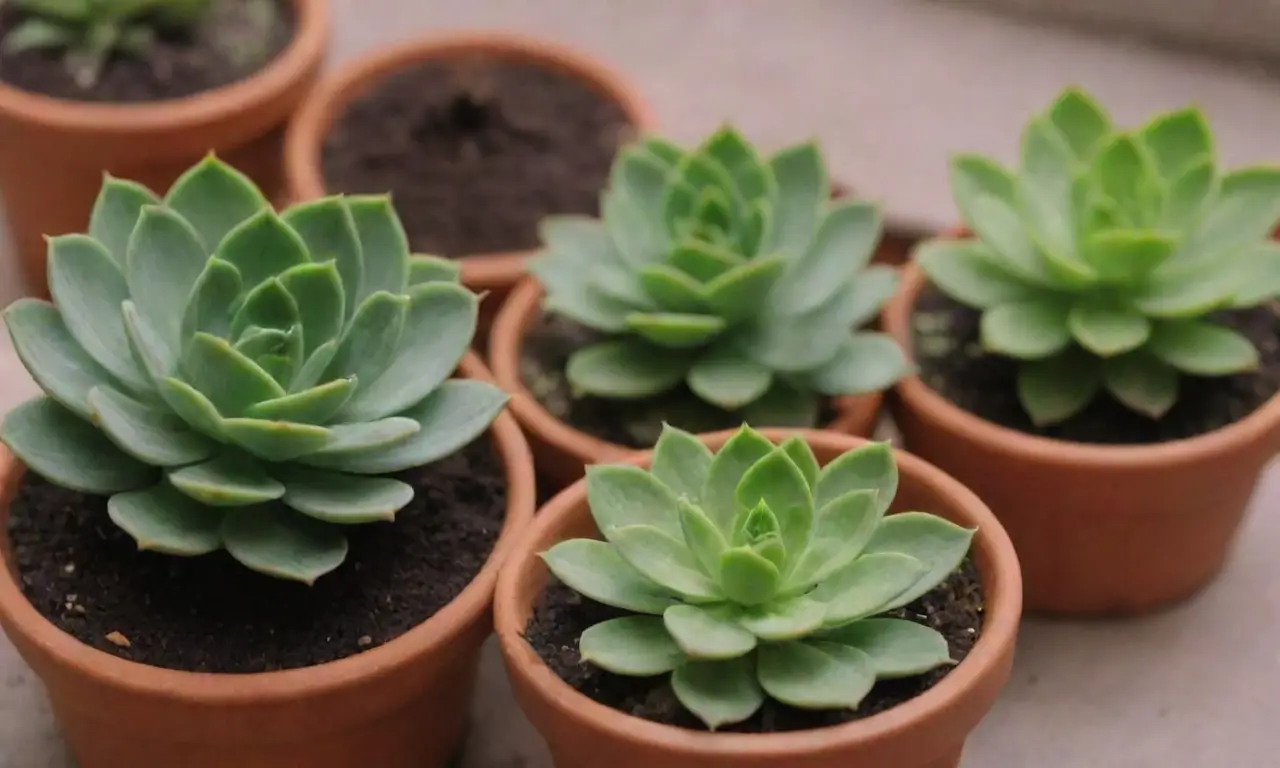How to Properly Apply Fertilizer Without Hurting Succulents

Introduction
Succulents have gained immense popularity among plant enthusiasts due to their unique beauty, low maintenance requirements, and ability to thrive in various environments. These fascinating plants store water in their leaves, stems, or roots, making them remarkably resilient in arid conditions. However, despite their hardiness, succulents require proper care to flourish, particularly when it comes to fertilization. Improper application of fertilizers can lead to burned leaves, stunted growth, and even death of these beloved plants.
In this article, we will delve into the delicate art of fertilizing succulents without causing them harm. By understanding the unique nutritional needs of succulents and adopting appropriate fertilization techniques, you can help your plants thrive while avoiding common pitfalls. We will explore the types of fertilizers available, the timing and frequency of their application, signs of over-fertilization, and the correct methods for applying fertilizers to succulents.
Understanding Succulent Nutritional Needs
The Basics of Nutrients
Like all plants, succulents require a range of nutrients to grow and thrive. The primary macronutrients needed are nitrogen (N), phosphorus (P), and potassium (K), often referred to as N-P-K. Nitrogen promotes healthy leaf and stem growth, phosphorus supports root development and flowering, and potassium aids in overall plant health and resistance to stress. Additionally, succulents benefit from micronutrients such as iron, calcium, and magnesium, albeit in smaller quantities.
Understanding the fundamental nutritional needs of your succulent plants is crucial before introducing any fertilizer. Over-fertilizing can lead to nutrient burn, while insufficient fertilization can stunt growth. Therefore, it's essential to assess the current conditions of your succulents, including their environment, growth stage, and existing soil quality. Healthy, well-draining soil often contains sufficient nutrients to sustain your plants for a while, especially if they've recently been repotted.
Identifying Nutrient Deficiencies
Recognizing signs of nutrient deficiencies in succulents can provide insight into whether fertilizers are necessary. For instance, yellowing leaves could indicate a nitrogen deficiency, while poor root development can signal a lack of phosphorus. On the other hand, if your succulent is exhibiting elongated growth with spaced-out leaves, it may be struggling with low light levels rather than a nutrient deficiency.
While succulents are generally adaptable, they can suffer if their nutrient needs are not met. Monitoring your plants closely for signs of nutrient deficiencies can enhance your chances of applying fertilizers effectively, ensuring that they receive the balanced nutrition they need to grow strong and vibrant.
Choosing the Right Fertilizer
Choosing the right fertilizer is a crucial step in the process of nourishing succulents. Fertilizers for succulents are typically formulated with lower ratios of nitrogen to promote root strength and reduce excess foliage growth, which succulents want to avoid. Look for products labeled as cactus and succulent fertilizers that either have a balanced, low-nitrogen N-P-K ratio (such as 2-7-7) or a diluted version of a general-purpose fertilizer.
 Using Mycorrhizae to Enhance Fertilizer Efficiency in Succulents
Using Mycorrhizae to Enhance Fertilizer Efficiency in SucculentsFertilizers are commonly available in liquid, granular, or slow-release formats. Liquid fertilizers are highly concentrated and can be mixed with water for application, allowing for precise control over nutrient delivery. Granular fertilizers can be sprinkled onto the soil surface and will dissolve gradually with watering. Slow-release formulations offer convenience, as they release nutrients over an extended period, minimizing the risk of over-fertilizing. It is essential to select the form of fertilizer that aligns best with your care routine and your planting conditions.
Timing and Frequency of Fertilization
Seasonal Considerations
One of the critical factors influencing the success of fertilizer application is timing. Generally, the best time to fertilize succulents is during their active growth period, which typically spans from spring to early summer. During this time, succulents are likely to absorb nutrients more effectively as they focus on growth. Fertilizing during the winter months, when many succulents enter dormancy, can lead to nutrient build-up and potential root burn.
Environmental factors such as light and temperature can influence when to fertilize your succulents. For example, if your succulents are kept indoors with stable temperatures, they may experience extended growing seasons and may require fertilization even in the latter part of summer. Always observe your individual plants for growth patterns and adjust your fertilization schedule accordingly.
Application Frequency
Another important aspect to consider is the frequency of fertilization. Most succulents will benefit from fertilization every 4 to 6 weeks during their active growth period. This schedule allows for consistent nutrient delivery without the risk of over-fertilization. It's crucial to assess the state of your plants after applying fertilizer; if they appear to be thriving, you may choose to maintain your routine. However, if you notice signs like wilting or yellowing, consider skipping the next application or diluting the fertilizer further.
Adjusting for Container Growing
Container-grown succulents often require different fertilization strategies compared to those grown in the ground. Since nutrients can deplete more quickly in confined spaces, it’s essential to monitor your potted succulents diligently. Be aware of how frequently you water, as this can influence nutrient leaching from the soil. If you’re using a high-quality potting mix that is rich in organic matter, you might find that your succulents need less fertilizer compared to those planted in standard cactus mix.
Application Techniques

Dilution is Key
When applying fertilizer to succulents, diluting the fertilizer in water is one of the easiest and safest methods. As a rule of thumb, it's often recommended to start with a quarter-strength or half-strength solution. This approach helps to prevent nutrient burn and allows you to gradually introduce your plants to fertilizers. It’s always better to under-fertilize than to overdo it, especially for sensitive succulents.
 Common Fertilizing Mistakes Every Succulent Gardener Makes
Common Fertilizing Mistakes Every Succulent Gardener MakesTo properly dilute your fertilizer, measure the appropriate amount based on the product instructions, mix it with water in a watering can, and thoroughly disperse it. Once mixed, ensure the solution is uniform before applying it to the soil around the base of the succulent. Avoid pouring the fertilizer directly onto the leaves, as this can promote burn and damage.
Timing the Application
The right timing for application can maximize the benefits of the nutrients. Water your succulents a day or two before you fertilize; this practice helps the roots absorb the nutrients more effectively and creates a protective buffer against any concentrated fertilizer application. After watering, you can apply the diluted fertilizer solution at the base of the plants, allowing it to soak into the soil.
It’s advisable to fertilize when the temperature is moderate, ideally in the early morning or late afternoon. Applying fertilizer during the hottest parts of the day could lead to evaporation and nutrient wastage. Moreover, watering the soil beforehand will reduce the likelihood of root burn, ensuring your succulents remain happy and healthy after fertilization.
Monitoring and Adjusting
After fertilizing succulents, it is essential to monitor their response. Look for changes in growth and color, noting any potential signs of over-fertilization, such as brown tips on leaves or wilting. If you do observe any adverse reactions, pause the fertilization schedule and revert to regular waterings.
Over time, you may find it necessary to adjust the fertilizer ratios and application frequency based on your succulents' responses, especially if you introduce different species with varying nutritional needs. Remember, consistent observation is key to successful succulent care.
Conclusion
In conclusion, the journey to successfully fertilizing succulents is rooted in understanding their unique nutritional needs, recognizing signs of deficiencies, strategically timing your applications, and employing appropriate techniques. By following these guidelines, you can ensure that your succulents receive the nutrients they need to flourish while avoiding the common pitfalls of fertilizer application.
Fertilizers can significantly enhance the growth and vitality of your succulents when used correctly. Take the time to select the right product tailored to the specific needs of your plants, and always start with a diluted solution to ease them into this nourishment phase. The growing season presents an excellent opportunity to help your succulents thrive, and by paying attention to their individual cues, you can tailor your fertilization routine accordingly.
 How Under-Fertilizing Can Harm Your Succulent Houseplants
How Under-Fertilizing Can Harm Your Succulent HouseplantsAs you gather experience and learn through trial and observation, you’ll develop a specialized approach to fertilization that supports healthy, vibrant succulents. Remember to keep nurturing your botanical curiosities, and enjoy the delightful process of caring for these remarkable plants. Happy gardening!
If you want to read more articles similar to How to Properly Apply Fertilizer Without Hurting Succulents, you can visit the Fertilizing Guidelines category.
